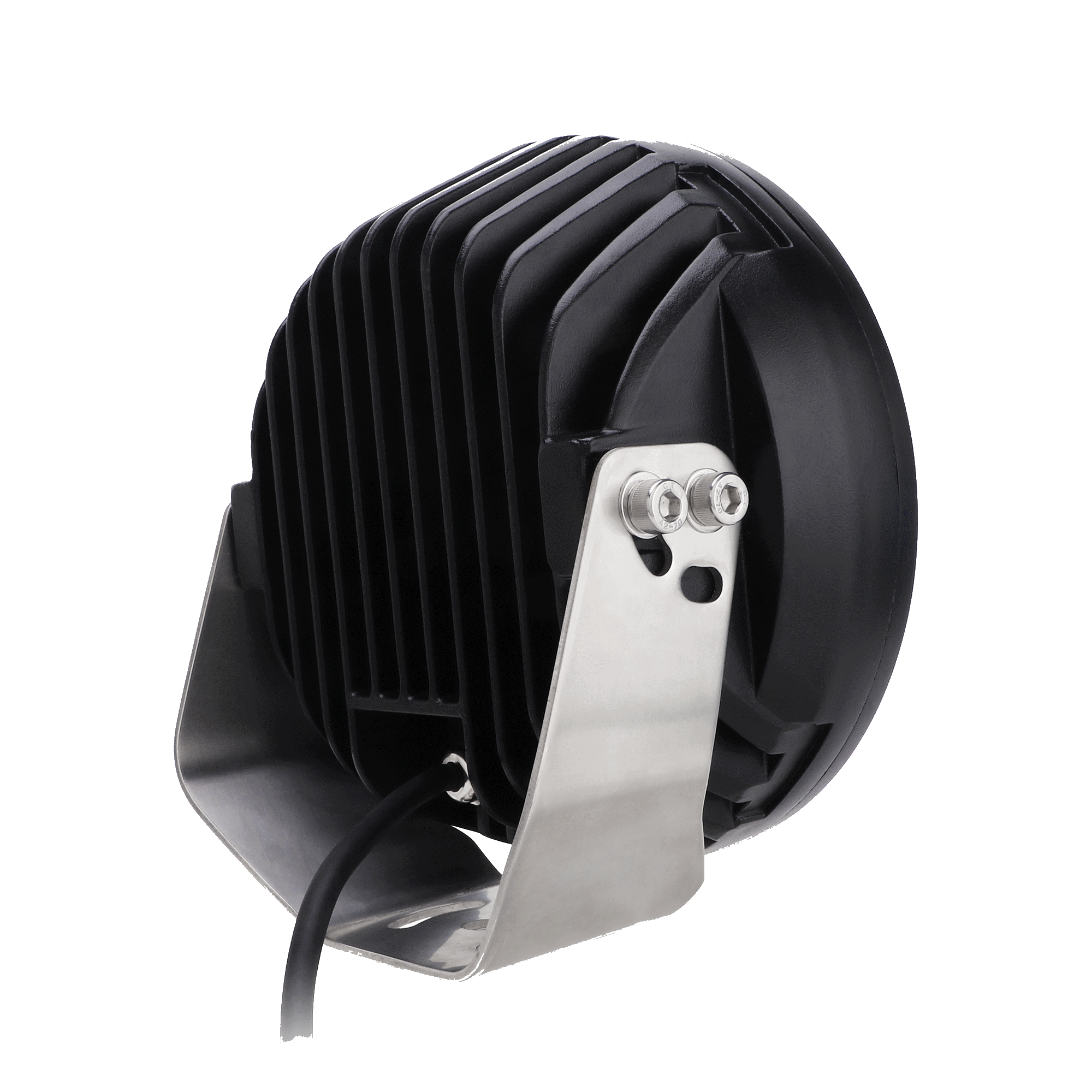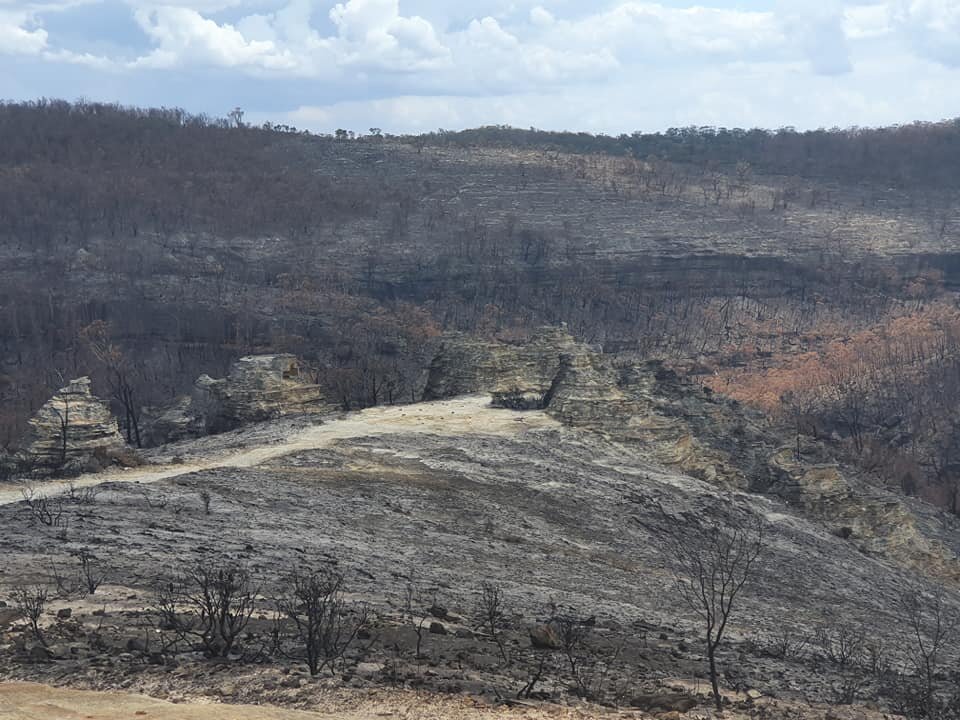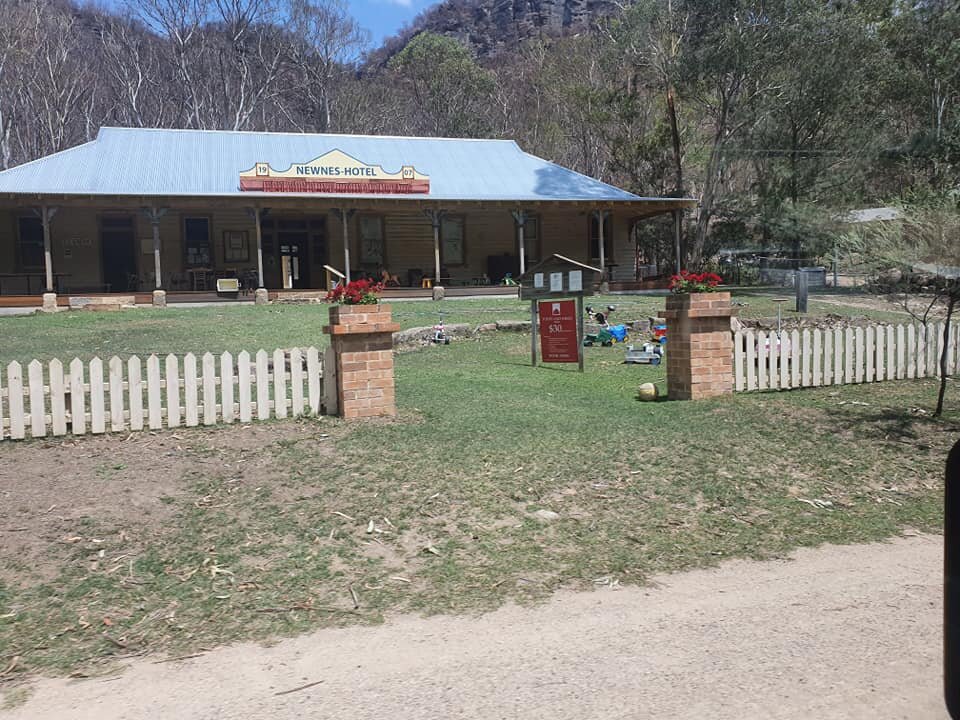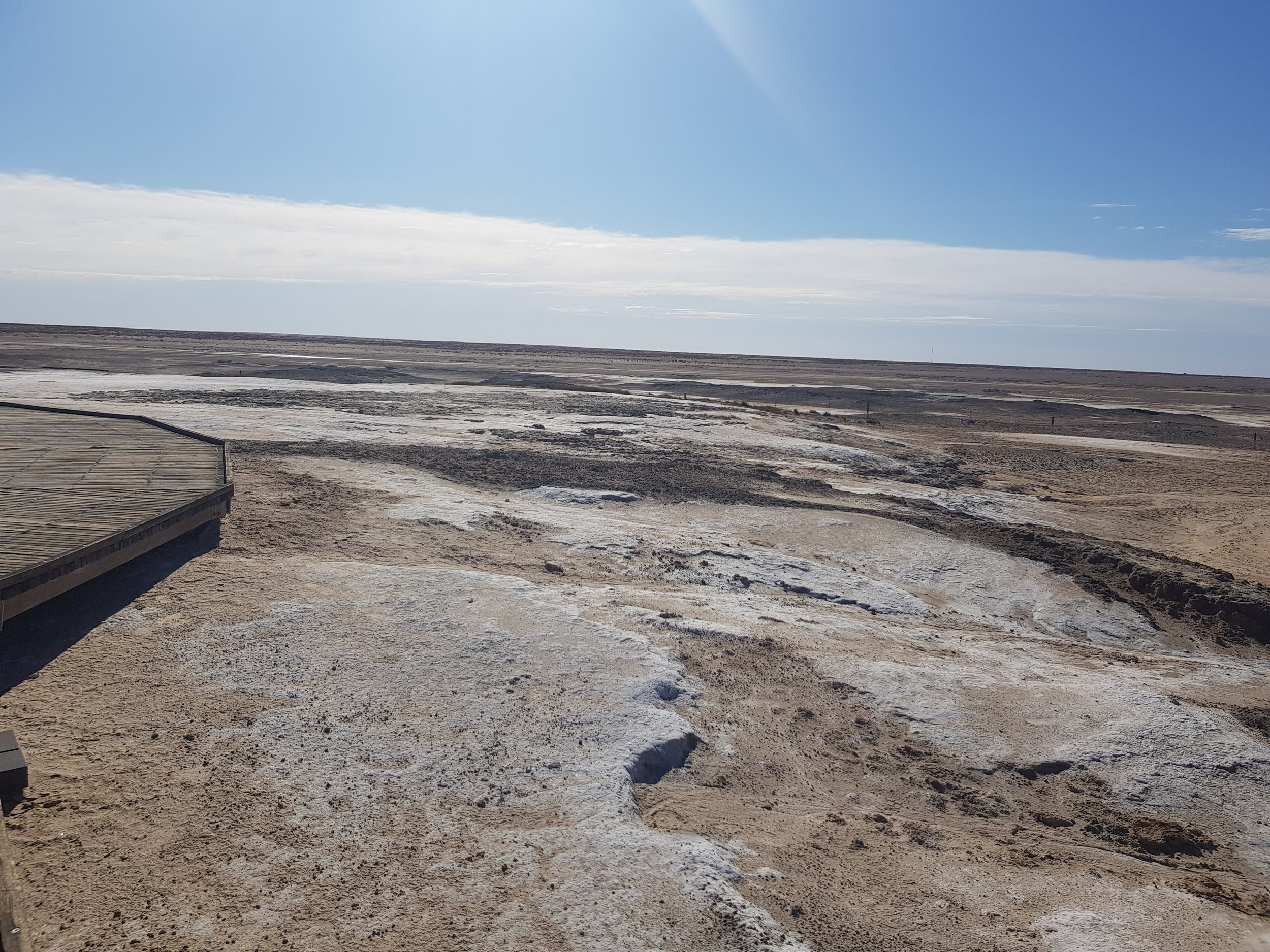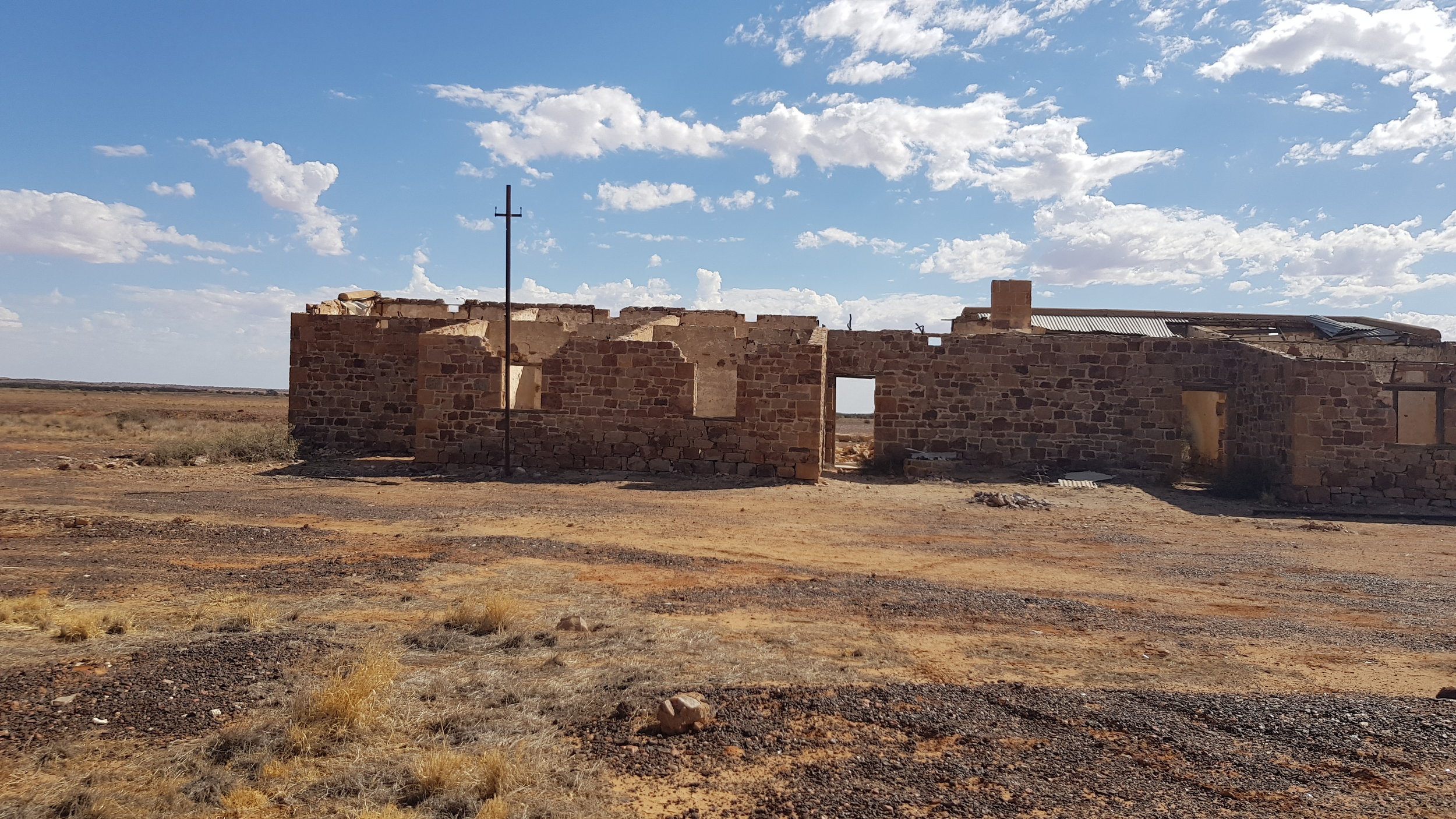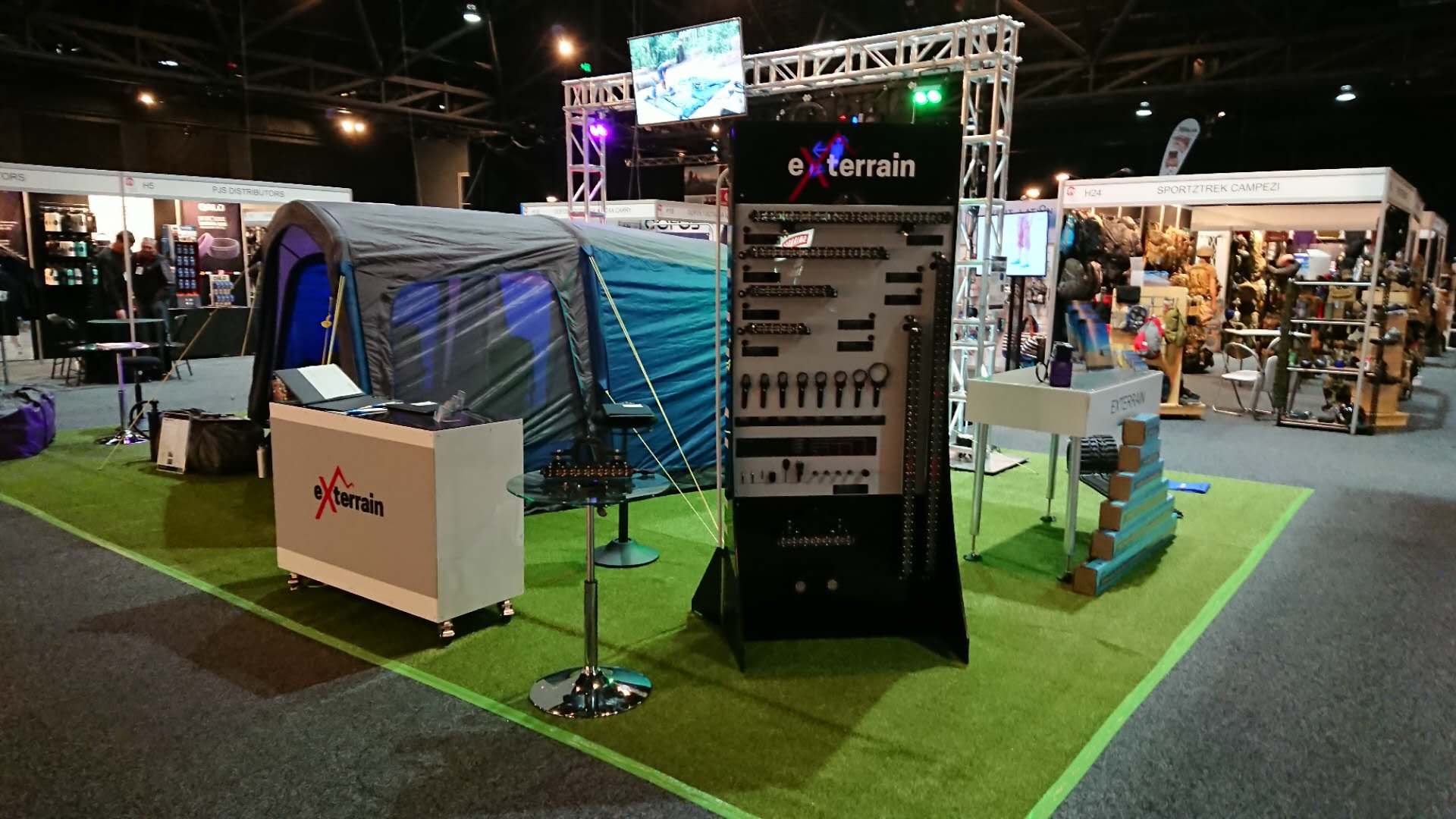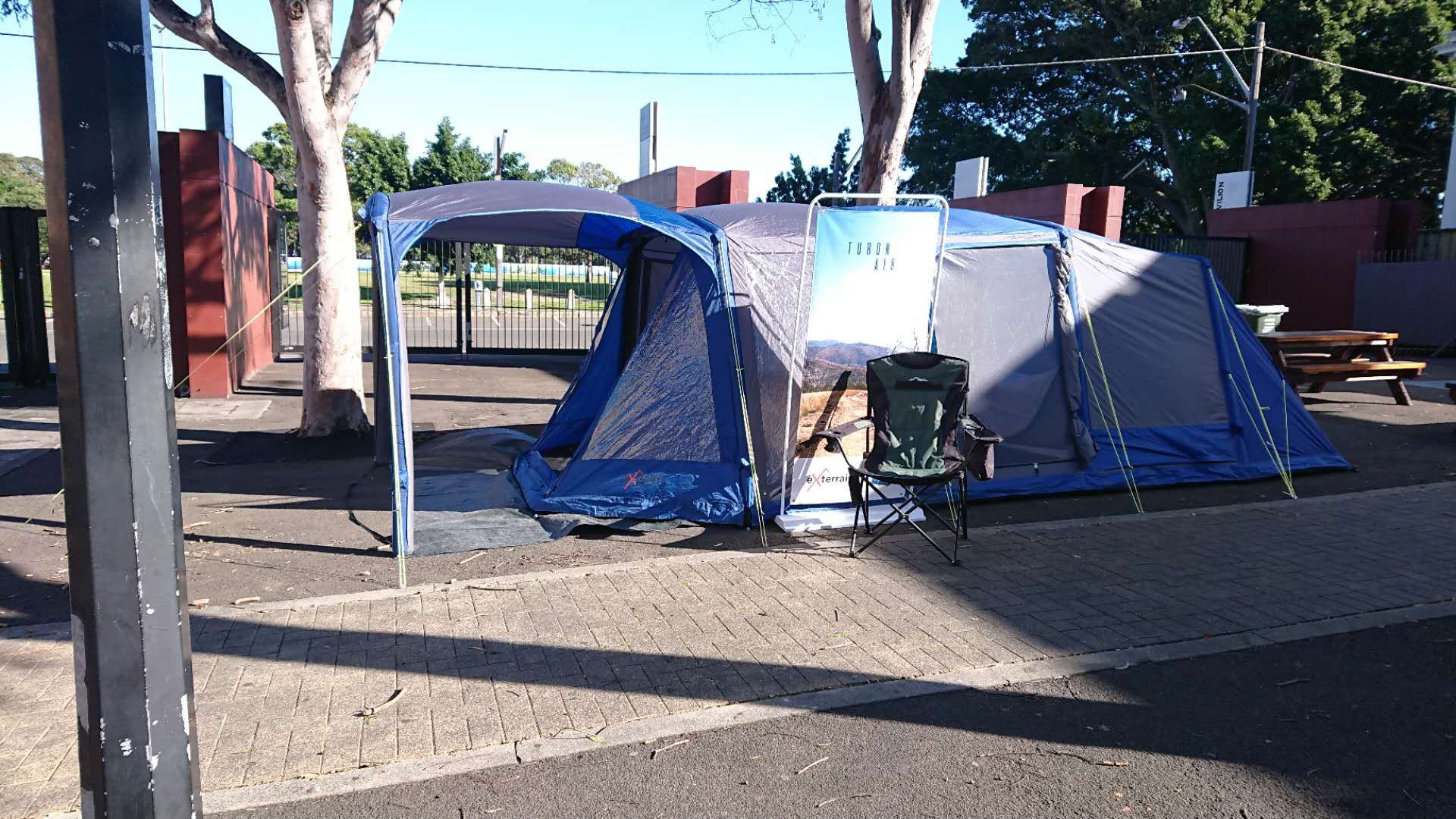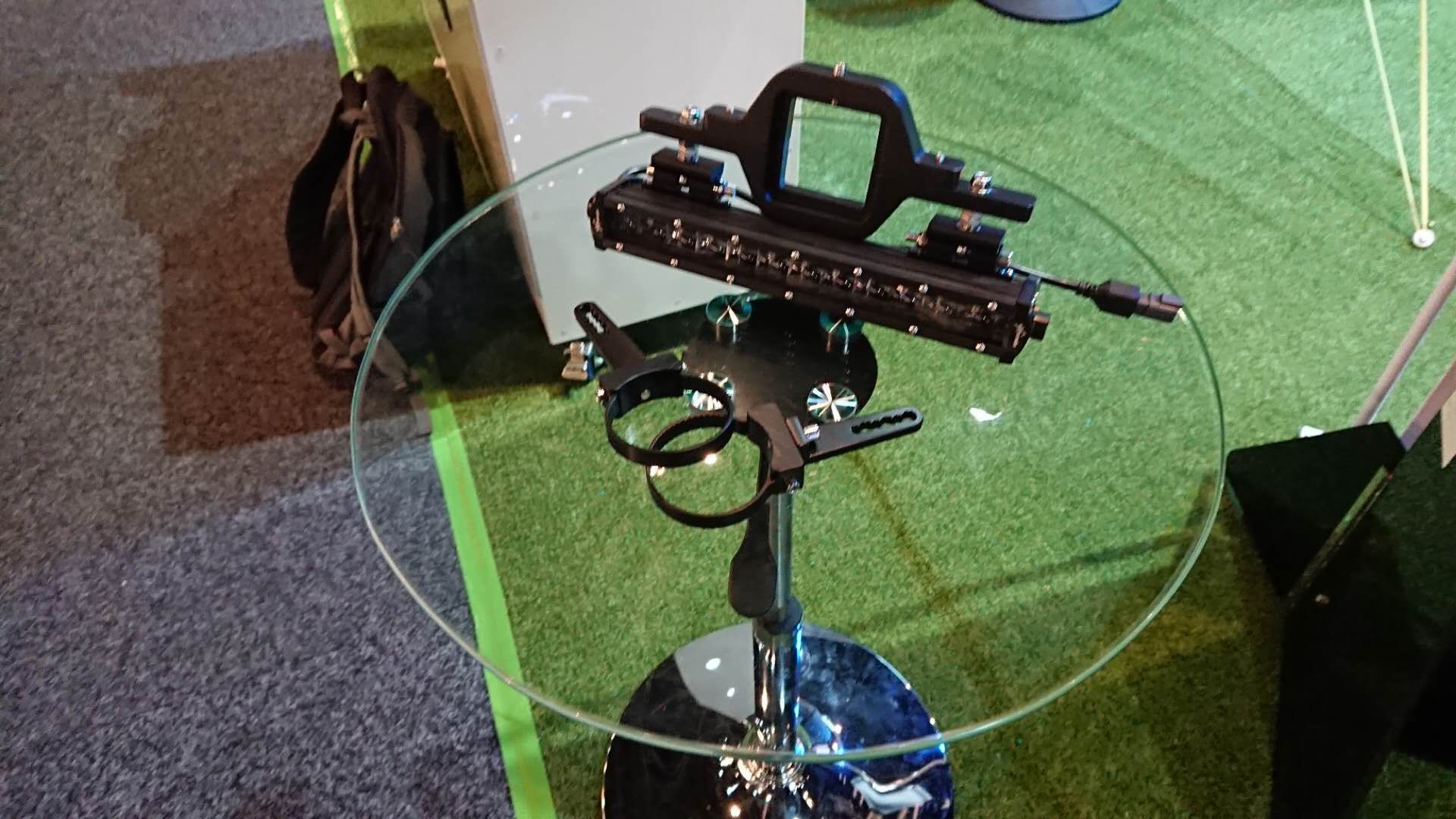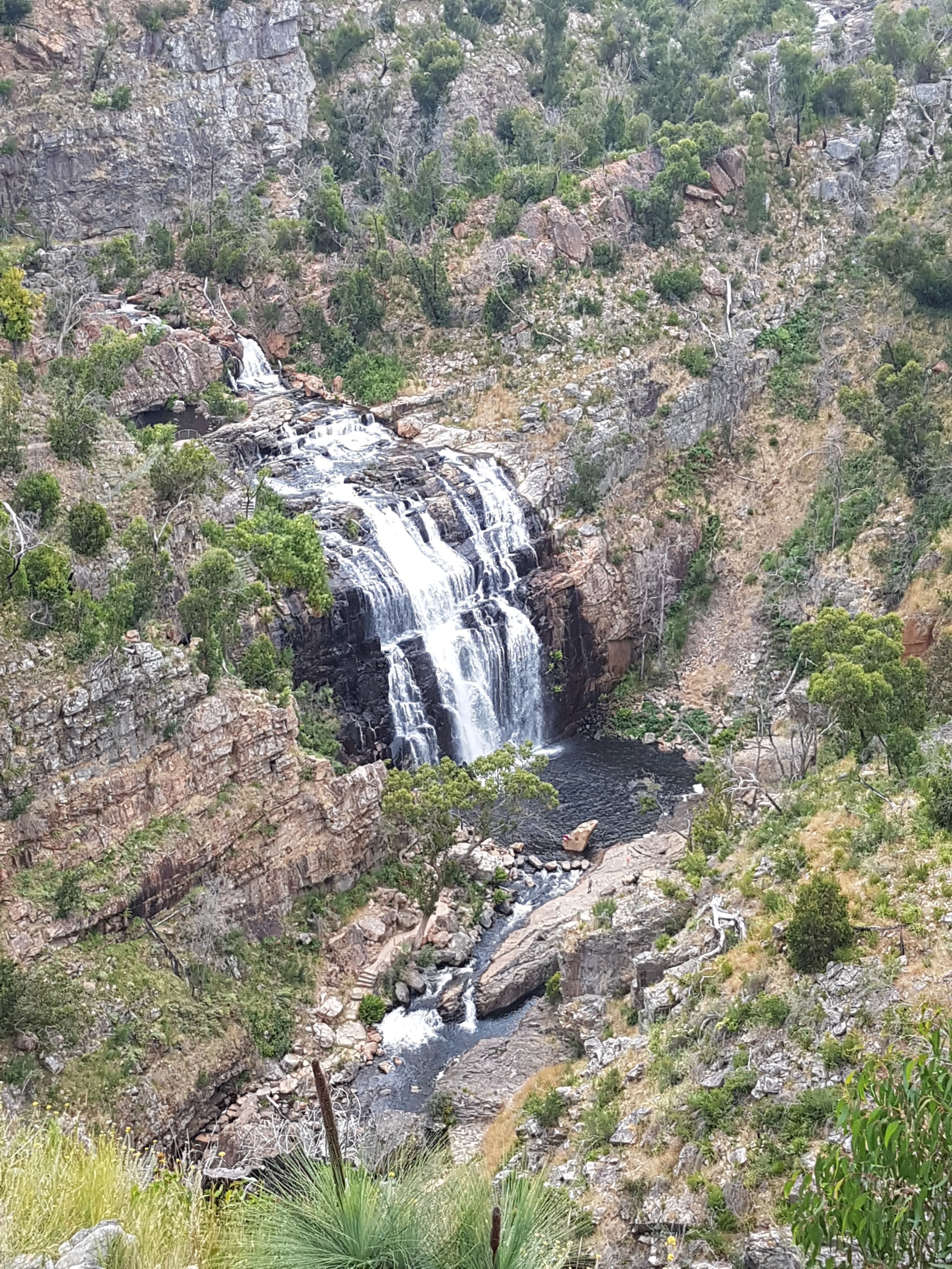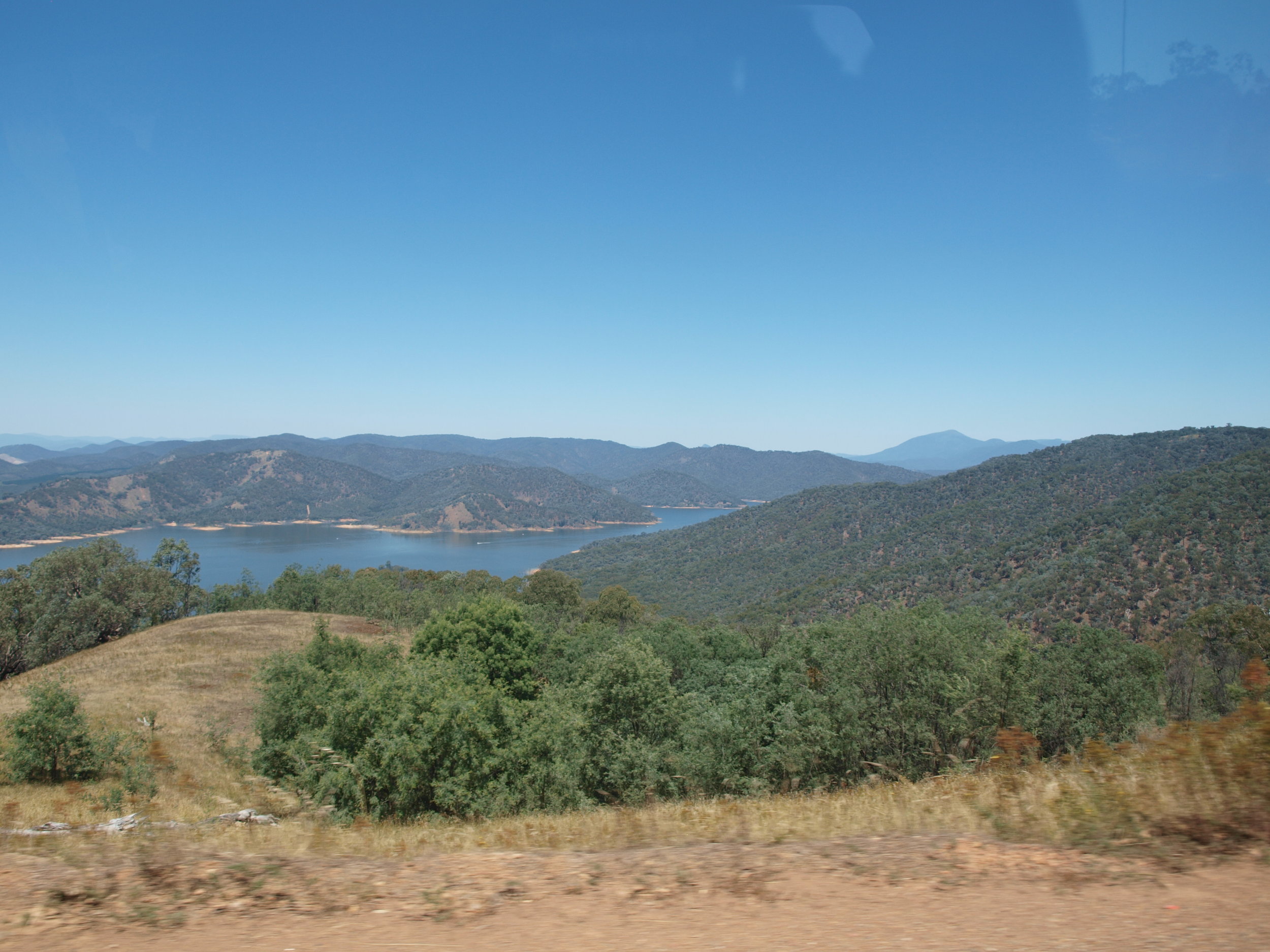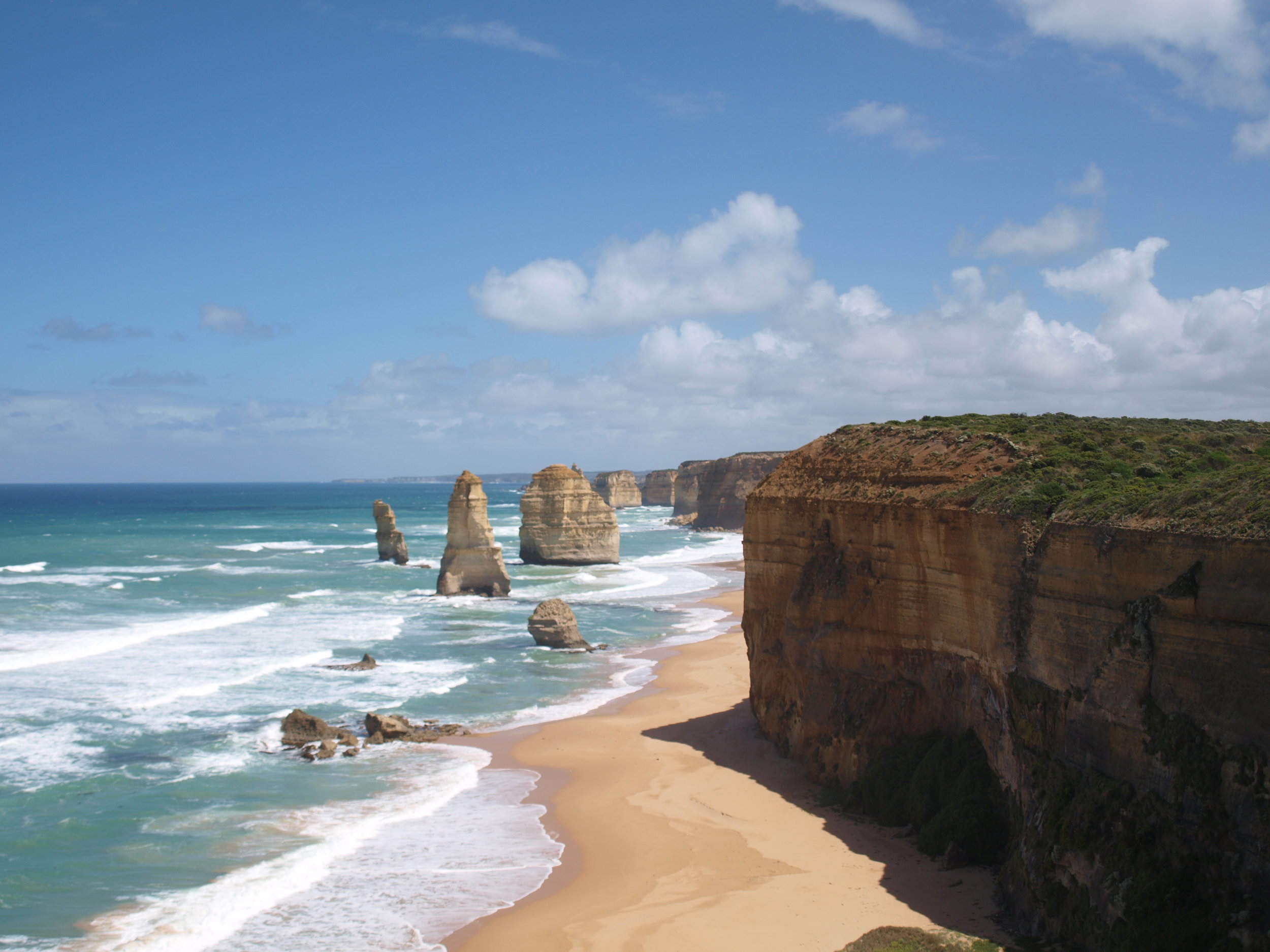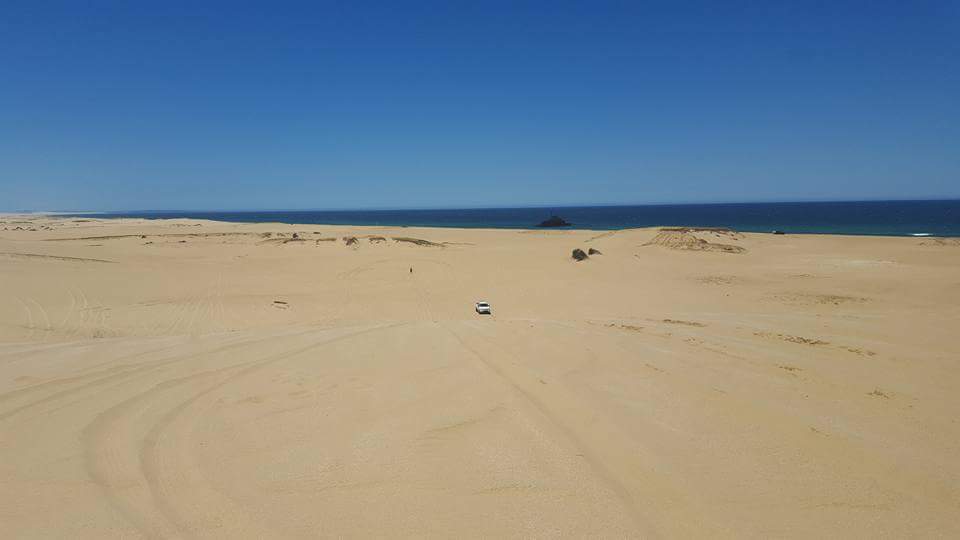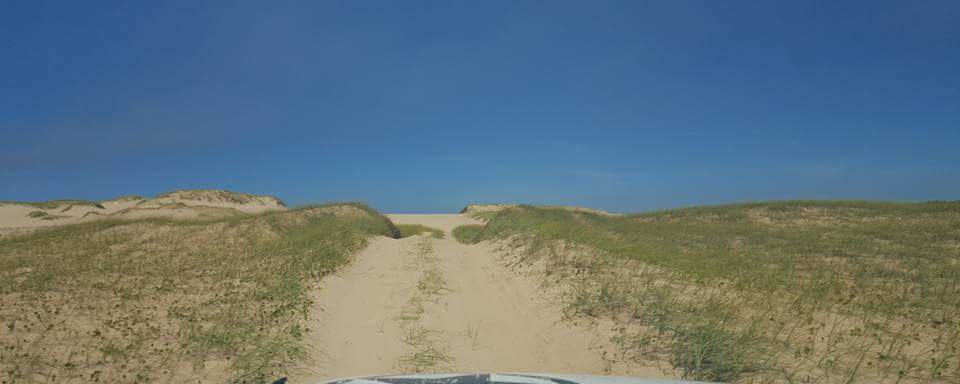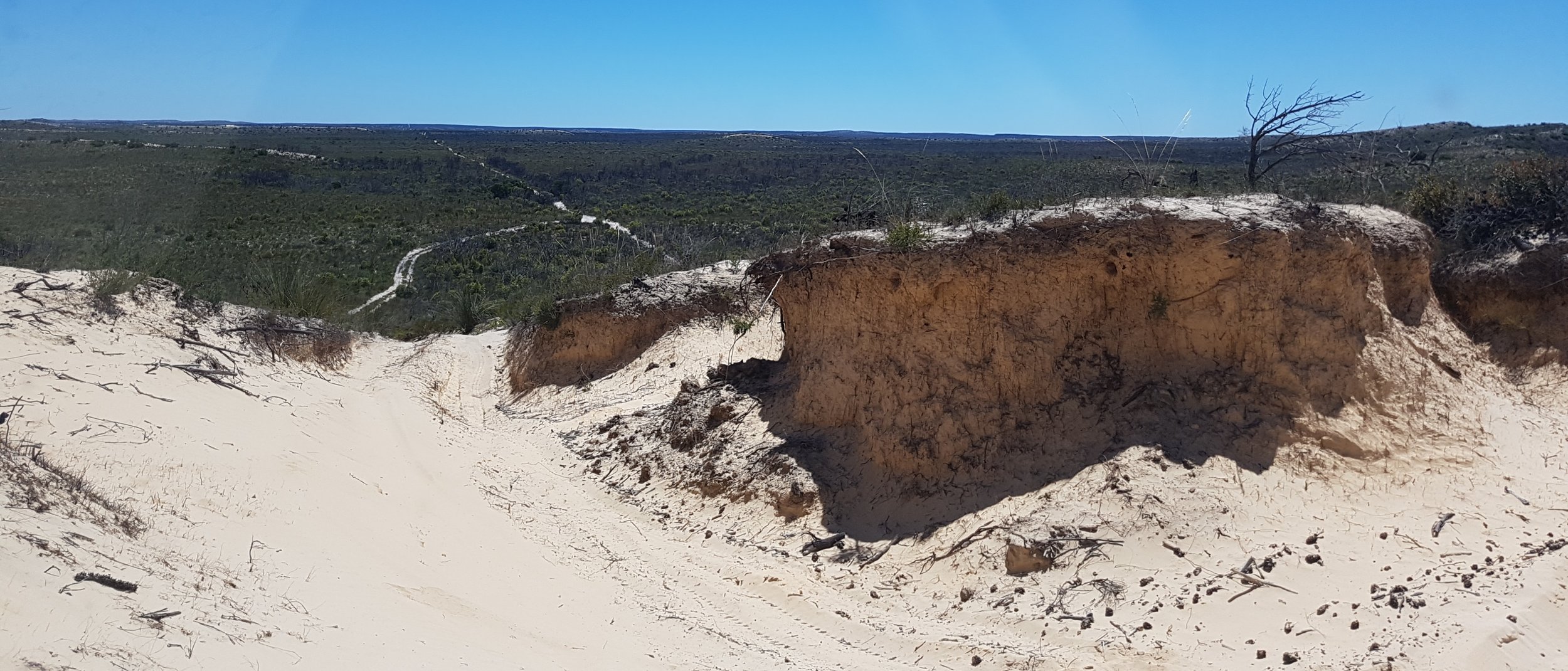We have demo Spot / Work lights on special at the moment - take off a further 30% off the wholesale price! If you would like to know what items we have on sale please feel free to contact sales@eXterrain,com.au.
COMING SOON: eXterrain Spot lights and Engineering Work Lights
The team at eXterrain are excited to announce their release of new Spot Light, Work Light and Engineer Lights - Keep an eye out for press releases on our Social Media accounts and website :)
AFTER THE FIRES: THE LOST CITY & NEWNES
We managed to get out and about this Australia Day weekend and witnessed the devastating impact the fires have had around the Blue mountains, Lithgow and Wolgan Valley regions.
The severity of the fires was clearly evident from Wentworth Falls and Evans Lookout - where most areas, particularly the valleys were struck hard.
The drive along Wolgan Rd (Newnes State Forest) not only highlighted the devastating impact of the fires, but also the lack of wildlife. The Bush that was once so dense and now sparse offers no food or housing for the wildlife that now remain. This was probably one of the only trips where we witnessed lack of wildlife.
The eerie landscape does however, offer signs of hope, with most trees and shrubs already regenerating - with the sight of green sprouting along the charcoal tree trunks. The 4WD trip also provided the opportunity to see popular structures like the Newnes Hotel and ruins that were thankfully saved.
The tour ended with the magical scenes of The Lost City - LITHGOW. (The Glow Worm Tunnel tracks are still closed.)
Despite the Wollemi National Park being closed this summer, some tracks have reopened. The drive via the Blue mountains also allows a few stop overs. #helpsupportlocalbusiness
On this journey, we witnessed the impact of these fires - parts that were then dense are now sparse scenes bushland consisting of charcoal stumps and red leaves. We are truly appreciative of all the efforts the RFS have provided - who have worked tirelessly for weeks fighting to contain these fires and continue to do so in many other regions of the country.
Wentworth Falls Evans Lookout, Garden of Stone National Park and Newnes State Forest - ending at THE LOST CITY rock formations.
PART III - Oodnadatta to Curtin Springs
DAY FIVE
The next day, we were back on the Ooandatta track, NW - headed for a small town called Marla. This trip took over 200km and provided spectacular scenery - driving parallel to The Painted Desert and Pedirka.
Once we reached the infamous "Welcome to NT" sign on the Stuart HWY, we realised we were making good time and decided to visit Alice Springs. After lunch we headed back south west on our way to Curtin Springs. However, we decided to make a detour to visit at the Henbury rest stop where we stopped to view the Henbury Meteorite Craters. After a 1.5km walk around the crater, we continued along the Ernest Giles Road - which is around 80kms of corrugated sections and then sandy track.
The roads turned to bitumen after the turn off south towards Angus Downs through Liddle Hills, which then leads to the Lassiter HWY - passing Mount Conner - the rock tourist think is Uluru - on our way to Curtin Springs.
Turon Air 4 & The Simpson Desert
Thank you to these happy campers who sent pictures showcasing the eXterrain Turon Air 4 inflatable tent with integrated tubing. Set up was at the world's largest sand dune desert, the Simpson Desert - stretching across Northern Territory, South Australia and Queensland. Camping spots included 3 O'Clock Creek, dunes and Junction/French Line. For more information on this product visit: https://www.exterrain.com.au/airtents. 🏕️
PART II - On Our way to Uluru - Oodnadatta Track
DAY FOUR:
We were on the Oodnadatta track by 7am next morning - the sky was reflecting the colours post sunrise - ideal to capture those picture perfect shots! The track itself is pretty well maintained and has a number of interesting stops along the way. Our first stop was at the lookout Pelican Point, Lake Eyre South. This stop allows for photos and access to walk on the south side of the lake itself, which at most times, is a dry salt pan.
Lookout Pelican Point, Lake Eyre South
Some other key points of interest were Curdimurka Ruins, The Bubbler and Blanche Cup, Coward Spring. According to the sign on site, the Curdimurka ruins date back from 1888, this station yard is the last intact on the old Ghan Railway. "Local Aborigines believed that a giant snake named Kiddimuckra lived nearby Lake Eyre. They avoided traveling along the shores of the lake, and when many viewed the approaching Ghan for the first time they fled" .
The Bubbler an island which consist of a mound spring, locked by surrounding land. The Bubbler " has the highest discharge of any individual spring in the Lake Eyre Supergroup. The spring is called 'The Bubbler' because it has been known to 'erupt' every so often. Previously it was reputed to rise 3-4 feet into the air, before current extractions rates of water."
(https://www.ausemade.com.au/photos/sa/oodnadatta-track/oodnadatta-track-7-blanche-cup.htm)
The Bubbler
Coward Springs - privately developed camp ground.
After 250km North West, we reached the turn off just before William Creek - 60km of well kept track toward Lake Eyre North - access point to Halligan Bay and ABC Bay. Halligan Bay is recorded at being the lowest point in Australia at 15.2m below sea level. Majority of the track was corrugated making it a more rougher ride. The scenery was however well worth the tour. The landscape changed from pitch Black toward the view of glaring white salt lake. The Lake was not full, although some tourists did comment that we witnessed the lake before the waters reached- apparently 15km away from the North!
On our way to Lake Eyre, North side
We continued North West on the Oadnadatta track, where ruins of the Old Ghan Railway follow alongside. The Algebuckina Ruins stop was ideal for those wanting to take pictures on the railway itself.
Algebuckina Old Ghan Railway Bridge
Algebuckina Siding ruins
After approx. 500km (from Marree including Lake Eyre drive) - we reached the Pink Roadhouse, where we had dinner and stayed the night. We made sure not to miss a sunset, so it was perfect place to just hop in the car, drive out onto the track and wait for that picture perfect moment.
Sunset, Oodnadatta (near Pink Roadhouse)
PART I: On the way to Uluru: Mudgee, Broken Hill, Marree
DAY ONE -
Our first stop was Mudgee, small trip from Sydney where we stayed overnight at a cabin and headed off the next morning to Broken Hill.
DAY TWO - From Mudgee, the trip to Broken Hill was 849km - it took us a little over 9 hours via main roads, passing main towns Dubbo, Nyngan, Cobar and Wilcamnia. Highlights of the trip were the comical signs regarding a town called Warren - a small town before Nyngan; and the changing scenery from green grass and bush to the red rugged harshness of the outback.
Phenomenal views on the way…
A short detour at Cobar to Fort Bourke lookout, worth the stop - where you will see an open cut active mine with a viewing platform to take some great snaps.
Fort Bourke Lookout
Our only other stop was in Cobar to refuel our tanks, and arrived at Broken Hill, there was time remaining to see The Living Desert Reserve, 9km from the City of Broken Hill - where you can visit the sanctuary and 'gain close access to outback plants and animals while understanding the regions Aboriginal heritage and the importance of preserving this environment for future generations’. After a nice walk along a trail among the plants, we managed to witness a Shingleback lizard walking along the road into the bushes.
The Living Desert Sculptures
Children excited over the Shingleback!
DAY THREE - The next morning we entered South Australia and continued along the Barrier HWY towards Peterborough (formerly known as St Petersburg). We stopped at Peterborough to buy more food supplies and then turned right on the B56 and then on the B80 - headed North to the next stop - Marree. Although it was a very long straight road, we followed views of the South Flinders Ranges. The rugged terrain of the Ranges were best seen from a rest area provided by a local property around 10km south of Parachilna. Flinders ranges National Park is best accessed by Brachina Gorge Road - there are other access points and many wonderful tracks however, unfortunately we did not have time to discover Flinders Ranges National Park!
View of Flinders Rangers from rest stop area
Peterboroug Stop
Continuing up North, the landscape transforms into a more flat, white arid terrain and as we pass Lyndhurst, we turn left at Ochre Cliffs- an Ochre being an important resource for Aboriginal community re trade and has cultural significance (the small cliffs are 1km in). We returned on the Outback Hwy heading towards Maree. Once in Maree the beauty of this country town is prominent - with the old railway trains on display upon entry and the infamous Marree Hotel - which is ideal for a hearty dinner or stay. On this particular night we decided to reside at the Oasis Caravan Park - lovely owners and simple cabins for a quick stay.
Ochre Cliffs
On the way to Marree…
Marree
Marree
Outdoor Retailer Association Show 2019
We will be displaying our lights and accessories at the Outdoor Retailer Association Show this year which will be at the Exhibition Pavilion, Melbourne Showgrounds.
Come visit our stand B2 and say G’day to our staff.
Exhibition Opening Times
Sunday 14th July: 8.30am - 5.30pm
Monday 15th July: 8.30am - 5.30pm
Tuesday 16th July: 8.30am - 2.30pm
Offroad 4WD and Camping Tradeshows
Interested in displaying our gear at your next 4WD and Camping Tradeshow?
eXterrain staff may be able to provide display stand, marketing material and signage at your next show.
Contact us today for more information: 02 8854 0160 / 0452645225 / sales@eXterrain.com.au.
Facebook Competition Winner - Rebecca Laurier
Thank you to the winner of a different life’s competition Rebecca for sending these pics through of the Turon Air 4 which was set up and used recently. Rebecca wrote the set up was “…very easy and quick. The trickiest bit was the inner white layer. Packed back down and into the bag on the first go. It was huge with space and the annex came in very handy for when it started to rain”. 🏕️
The Turon Air 4 is ideal for those remote, off road locations and comes with the complete set up – Awning covers, integrated tubing with overpressure valve, ground underlay, glow in the dark guy ropes and peg rings, inner flysheet, ground sheet and manual pump.
Hope you enjoy many more trips in the near future!
Outdoor Retailer Australia show 2018
eXterrain stand ORA 2018
It was that time of year again when the Outdoor Retailer Show (ORA) was on - The ORA ‘is owned by the Snow & Outdoor Trade Association, which is a Not-For-Profit association run solely to provide a trade exhibition to the outdoor industry in Australia and New Zealand’. Air pole technology in the camping world was on display at our stand. This advanced technology has existed for quite some time now, however, it has only just recently entered the Australian outdoor market.
The show allowed us to highlight the durability of air tents – we had the Turon Air range on display inside and outside. Our Turon Air 6 battled the elements outside - let’s just say it was the most ideal weather to prove how sturdy inflatable air tents really are! We also gave visitors the opportunity to see how easy the tents are to inflate and how they come packaged. For those interested in our inflatable tents - quick easy set up, durable and light weight – the Turon Air range is ideal for you!
Turon Air 6
Other products on display included our RAVEN series – dual row light bars and lighting accessories with LIFETIME WARRANTY. Sure, there are a number of light bars on the market – however, the team at eXterrain feel that it is important to have high quality lights bars at a more affordable price. Another point of difference is that the smaller Raven bars can also be utilised as reverse lights – we have two models – the RAVEN Pack – (which includes, the light bar, brackets and loom) ideally fitted around the hitch receiver, and the Hitch24L which is a more affordable option, fitted around the ‘tongue’.
Raven Pack & Brackets
The GoannaRT1500 recovery track was also at the show – we know that in extreme weather conditions, the level of difficulty for 4WD tracks can increase quite rapidly and unexpectedly. For those who have not upgraded their vehicle with 4WD mud tyres, the Goanna RT1500 is essential. Designed to offer an easy storage solution, the Goanna RT1500 requires no installation or brackets and provides exceptional ‘goanna like’ grip to assist the driver when stuck in muddy, snowy and sandy conditions.
RAVEN series
Goanna1500RT
Thank you to the organisers of the show and everyone who attended the show. If anyone would like any further information about our products and services, please feel free to contact us.
The Advantages of Inflatable tents - Why I choose the Air Pole system?
eXterrain have kick started the New Year with the launch of our new Turon Air Range camping tents. The Turon Air tent range comes in 3 different sizes – 2, 4 & 6 plus. The Turon Air 4 was showcased on A Different Life’s Facebook blog page which generated much interest. The discussion on the post was overwhelmingly positive but there were a few people who were not familiar with air tents that expressed some trepidation. Most questions or comments were focused on the durability and stability of the air pole system.
Fair enough!
eXterrain believe that it is important to inform the Australian camping community how reliable and sturdy these tents actually are. The air poles have three layers and are not exposed, they are puncture resistant and are made of thermoplastic polyurethane (4 and 6 person tent poles are 100mm in diameter, 2 person tent 65mm in diameter). As long as the poles remain in their covers there is very little wear. They would require a fair amount of effort to create a puncture and would require a sharp implement. If the need shall arise, the tent does come with a repair patch – the patch can be stuck over the puncture – just like a tube in a tyre.
As a 4WD and camping enthusiast, my family and I were keen on camping but always dreaded the time it took to set up traditional camping tents with metal poles. Yes, set up times have improved with most tents these days, but we were also looking for a high quality, quick set up and lightweight camping tent – which is what made eXterrain air pole tents very appealing.
Another important factor to consider when buying a tent is considering the specifications and material – weighing the pros and cons. Yes, canvas tents are more insulated however; I found them a lot heavier and more expensive. The eXterrain tents are designed for any kind of camping – including off road isolated camping grounds. Set up time at camp sites is cut drastically and the actual tent is easy to carry to a campsite as a result of it being lightweight.
With attractive inclusions such as accessories like ground sheets, glow ropes and rings for pegs, manual pump, inner flysheets and privacy screens - and three year warranty – the Turon Air range are ideal for those interested in camping in remote off road locations.
Now that I have purchased an air tent and after experiencing the ease of set up and comfort, I can never go back to metal pole set up.
For a brief look at some FAQs about these tents just click here.
eXterrain
Maria Maniatis
Final PART III: Mildura, Murray-Sunset National Park and the Pink Lakes
Lake Kenyon, Murray-Sunset National Park
From the motel in Mildura, the tour continued to drive onto Murray-Sunset National Park – a park that is renowned for its red dirt and clear blue skies. The Murray-Sunset is the largest national park in Victoria with attractions including – the Shearers Quarters (a hostel style accommodation) and the spectacular pink lakes.
The journey started south from Mildura until we turned onto Pheeny’s Track which led onto sunset track until we reached the Pink Lakes. It’s quite a well graded road – at times sandy steep dunes that require some high clearance – very remote area so plenty of fuel, food and water supplies is a must including recovery equipment.
Roads are well graded and at times sandy (like above)
The Pink Lakes – are salt lakes (Lake Kenyon, Lake Crosbie, Lake Hardy and Lake Becking) and are absolutely breathtaking – You can actually walk on the surface of Lake Kenyon, and the algae Dunaliella Salina – is what makes the colour pink. The lakes have been tested at 99% pure salt and harvesting stopped in 1979. These lakes can also be accessed from the highway if one chooses not to drive through the Murray-Sunset.
Lake Kenyon Salt lake
After admiring the spectacular views of the lakes, we headed off to our next stop - motel at Hay and from there went home to Sydney.
Spectacular wildlife
Part II – The Grampians National Park and the Big Desert Wilderness Park,.
The next camping spot was located at Boerang (prepaid for two nights) in the Grampians National Park – a highlight of the trip. Was extremely hot being in summer, however we spent our days exploring 4WD tracks and witnessed wildlife, especially a great number of emus.
The spectacular view of the sandstone mountains at The Grampians National Park
MacKenzie Falls view from the lookout
The Mackenzie waterfall is a must – considered the most visited waterfall in the park. There is the option to walk to the base of the waterfall (1hr 30min) or to the MacKenzie Falls lookout (20mins). Either way, the views are magnificent!
4WD tracks at the Grampians were rocky and at times steep - level of difficulty can be marked difficult at times and allow extra travelling time.
The remaining part of our day was spent in the 4WD along the Rock Wallaby Track and Victoria Range Track, witnessing stunning scenery on the infamous sandstone mountains. Most tracks are long and challenging – especially when wet. (recovery equipment a must!)
After creating fond memories at the Grampians National Park, our trip continued north bound, heading for the Border Track. As noted in a previous blog, this was an interesting - and very lumpy track – paralleling the Victorian and South Australian border heading north. The ride was so bumpy we decided to take a detour onto RED BLUFF TRACK which led us through THE BIG DESERT – approx 36km of sandy tracks and dunes.
The Border Track - Southern end
The Big Desert - sandy stretch
Continuing on what seemed to be endless roads, but offering spectacular scenery, we finally entered WYPERFIELD Park and made our way to Mildura where we stayed the night.
PART I - From Sydney to the Great Otway National Park
Part I was the first leg of 9 day 4WD camping trip that was taken from Sydney, along the coast which ended in the Victorian Desert (Over 4000kms).
The first stop was at a remote free camping spot– a 1 night stay at Tin Mines Campground at Woomargama National Park located in the South West Slopes region of southern NSW.
On our way to Tin Mines Campground, Woomargama National Park
The next day, we packed up and settled at Lake Eildon - Candlebark Campground, Fraser Block – being a popular time during school holidays, a camp site was pre-booked with facilities and a great spot by the lake side.
View of Lake Eildon on our way to Candlebark Campground
Camp site beauty
Driving along the great Ocean Road, we settled at the Great Otway National Park – easy 4WD tracks and a number of free camping grounds. A popular tourist destination and because of this, we were lucky to find a camp site to pitch the tent early afternoon. With our tent pitched for two nights, we explored the Otways and wildlife – with a small walk to witness Hopetoun Falls and then drove some tracks.
During our stay at the Great Otway National Park, we drove about 1.5 hours to experience the Twelve Apostles - limestone stacks off the shore of the Port Campbell National Park.We walked the small walkway available along with a scenic helicopter ride giving us the best of all views.
Hopetoun Falls
Twelve Apostles, VIC
After an amazing experience with the Apostles we headed back to campsite and prepared for the next leg of our short summer adventure!
Most campsite information is available online - please keep in mind that some areas such as Woomargama NP are remote.
STOCKTON BEACH, NEWCASTLE - NSW
Stockton Beach is located north of the Hunter River in New South Wales, stretches from Stockton to Anna Bay and is 32km long. Stockton Beach provides awesome scenery including the Sygna Shipwreck. The 53,000 Norwegian bulk carrier Sygna became stuck in May 1974 during cyclonic conditions. After repairing holes in the stern, a Japanese salvage team refloated the bow to Taiwan and broken up for scrap. They were, however, unsuccessful with the Stern, which remains wedged in the sand on Stockton Beach.
NORWEGIAN SYGNA SHIPWRECK
A great day or weekend to spend with family or friends – Other areas of interest are the fishing huts located behind the dunes – called Tin City - along with Pyramid-shaped Tank Traps which were placed along the beach to prevent enemy landings.
TANK TRAPS 1946 (REF - Newcastle Herald – 15 May 2015)
Recovery equipment is a must with soft sand and plenty of fun driving on the dunes - an ideal 4x4 track for the family. There are permits required to access the beach and designated camping and 4WD areas with plenty of information available online.
DRIVING ON THE SAND DUNES
(REF – for more information about the wreckage visit: https://www.coastalwatch.com/surfing/210/flashback-to-the-infamous-1974-storm-swell-sygna-stockton-wreck)
THE BORDER TRACK - SA/VIC
An interesting and very lumpy track is THE BORDER TRACK – paralleling the Victorian and South Australian border heading north, the Border Track offers spectacular scenery for the ultimate 4WDriver! This particular trip was done in January 2017 - southern end of the track. A detour was made which led through to THE BIG DESERT and MURRAY-SUNSET NATIONAL PARK. Extra supplies of food, water, fuel and recovery equipment were carried due to the remoteness of the location.
If you are keen on a very bumpy ride - this track is for you! Self-sufficiency is a must especially with soft sands and being a remote location - For more information about the track visit: https://www.environment.sa.gov.au/parks/find-a-park/Browse_by_region/Murray_River/ngarkat-conservation-park.
eXterrain's New Website...
eXterrain is an Australian wholesaler that distribute 4x4 and Camping accessories. Watch this space for all the latest in product releases and outdoor experiences. For more information on our products visit www.eXterrain.com.au.



